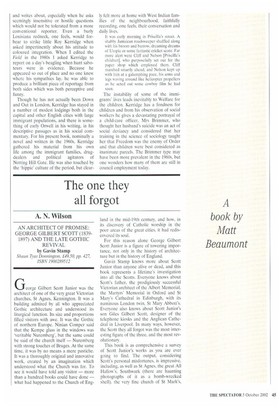The Orwell of Notting Hill
Simon Courtauld
SUBJECTS OF THE QUEEN by Roy Kerridge
Duckworth, £16, pp. 192, ISBN 0715630202 Roy Kerridge is conservative in attitude, he loves the works of Kipling and he enjoys the company of those whom he describes as of the African diaspora but would rather not call blacks. His affection for that race may have originated with his West African stepfather; he has certainly spent much of his time in the coloured districts of London. And I remember a previous book of his recounting his travels in parts of the southern United States, which appealed to him mainly because of their history of black enslavement. It is also relevant to point out that Kerridge is physically quite small: he has a round, studious, bespectacled face and a slight stammer, and he carries his belongings in a plastic shopping bag. The air of vulnerability which he conveys enables him to learn more about those whom he consorts with
and writes about, especially when he asks seemingly insensitive or hostile questions which would not be tolerated from a more conventional reporter. Even a burly Louisiana redneck, one feels, would forbear to strike little Roy Kerridge when asked impertinently about his attitude to coloured integration. When I edited the Field in the 1980s I asked Kerridge to report on a day's beagling when hunt saboteurs were in evidence. Because he appeared so out of place and no one knew where his sympathies lay, he was able to produce a brilliant piece of reportage from both sides which was both perceptive and funny.
Though he has not actually been Down and Out in London, Kerridge has stayed in a number of modest lodgings both in the capital and other English cities with large immigrant populations, and there is something of early Orwell in his writing, in his descriptive passages as in his social commentary. For his present book, nominally a novel and written in the 1960s, Kerridge gathered his material from his own life among the immigrant families, drugdealers and political agitators of Notting Hill Gate. He was also touched by the 'hippie' culture of the period, but clear
ly felt more at home with West Indian families of the neighbourhood, faithfully recording, one feels, their conversation and daily lives.
It was early morning in Priscilla's street. A shabby Jamaican roadsweeper shuffled along with his broom and barrow, dreaming dreams of Utopia or some fantastic cricket score. Far more alert were Cliff and Nelson [Priscilla's children], who purposefully set out for the paper shop which employed them. Cliff marched smartly ahead, and Nelson kept up with him at a galumphing pace, his arms and lees waving around like helicopter propellers as he acted out some cowboy film he had seen.
The instability of some of the immigrants' lives leads inevitably to Welfare for the children. Kerridge has a fondness for children and from his observation of social workers he gives a devastating portrayal of a child-care officer, Mrs Brimmer, who thought her husband's suicide was an act of social deviancy and considered that her training in the science of sociology taught her that Freedom was the enemy of Order and that children were best considered as inanimate parcels. The Brimmer type may have been more prevalent in the 1960s, but one wonders how many of them are still in council employment today.





































































 Previous page
Previous page